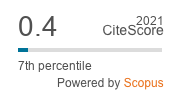Indian record of the old-world psyllid Heterotrioza chenopodii (Reuter) (Hemiptera, Psylloidea, Triozidae) on quinoa Chenopodium quinoa (Amaranthaceae)
DOI:
https://doi.org/10.33307/entomon.v48i3.935Abstract
The Old-World Psyllid, Heterotrioza chenopodii (Hemiptera, Psylloidea, Triozidae) was found infesting quinoa, Chenopodium quinoa (Amaranthaceae) crop. The psyllids were identified using taxonomic traits and further confirmation with mitochondrial marker based molecular approach. The information on damage and its life stages is reported along with the phylogenetic information of the species. The identity, analysis in NCBI indicated that the MT-COI sequences of H. chenopodii were 96 per cent identical to the previously deposited sequences with NCBI and five submissions with accession numbers were made viz., OP735496, OP740826, OP740828, OP740829 and OP740830. The phylogenetic tree represented the similarities in the analyzed sequences Indian populations are found to be merged in between the other similar global populations.


